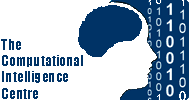
CCFEA projects / modelling in constraints / computational finance and economics
Modelling involves identifying stake holders and describing their relations mathematically or procedurally. This allows us to find the equilibrium of the system.
Equilibrium can be found mathematically in simple models. In more complex models (which includes most of the real-life models), simulation is the only practical alternative to find equilibrium. Simulations can often help to identify undesirable outcomes (such as a crash in a stock market). Simulations would help us develop policies to block undesirable outcomes.
Machine learning is sometimes used to “learn” optimal strategies. Without machine learning, one has to evaluate one policy at a time, which could be extremely laborious.
Modelling has been used extensively, e.g. wind-tunnels for aeroplane and car design, war plans, design of electricity markets.
Could we be wrong? Yes, we'll always make mistakes. We inevitably simplify things. We may leave out crucial relations.
“All models are wrong, but some are useful” (George Box 1987).
Modelling is a cost-effective way to assess a situation. Modelling and simulations help answering "what-if" questions, so they are pretty useful for stress testing. Machine learning enables us to look for (learn) policies and business strategies. Modelling enables us to scientifically evaluate such policies and strategies.
The alternative is to go into business or implement a policy unprepared.
“More calculation is better than less, Some calculation is better than none” (translation, The Art of War by Sun Zi 6BC).
 Maintained by
Edward Tsang; Last updated 2012.10.25
Maintained by
Edward Tsang; Last updated 2012.10.25